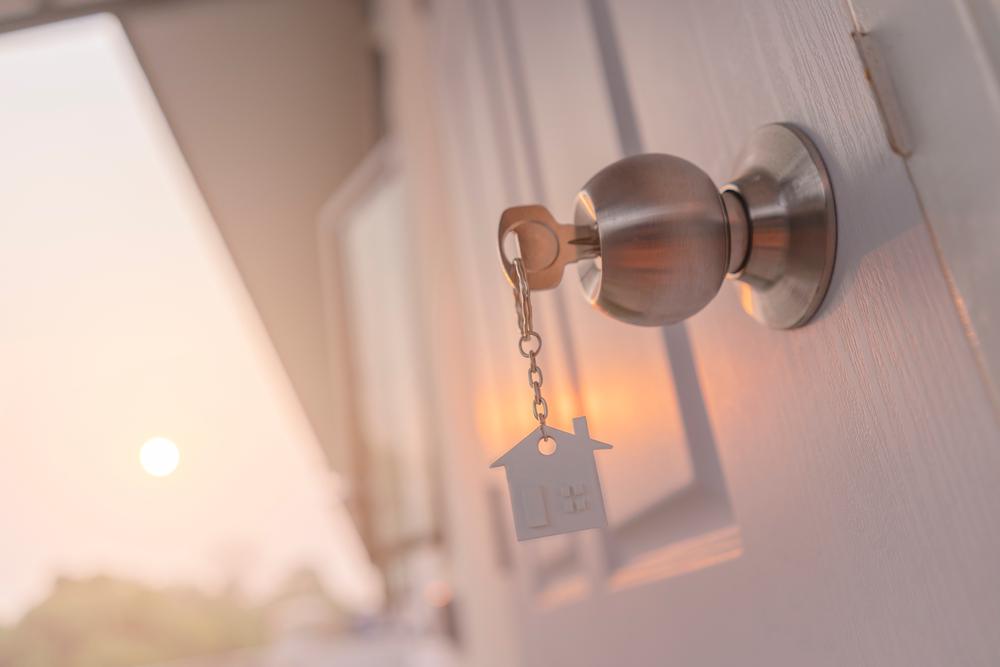 Even if you have no interest in real estate or you don’t plan to buy or sell in the near future, the likelihood that you have heard the public talk about the market, interest rates, and real estate trends and try to predict the future is pretty likely. As a real estate agent, I get asked on a daily basis about the market and my thoughts. Plain and simple, the market in Northeast Florida is still moving. Yes, rates are high and prices have increased, but Jacksonville is still one of the most affordable places to live in Florida and offers so much to those looking to relocate for great schools, to have beach weather almost year-round, and to benefit from no state income taxes.
Even if you have no interest in real estate or you don’t plan to buy or sell in the near future, the likelihood that you have heard the public talk about the market, interest rates, and real estate trends and try to predict the future is pretty likely. As a real estate agent, I get asked on a daily basis about the market and my thoughts. Plain and simple, the market in Northeast Florida is still moving. Yes, rates are high and prices have increased, but Jacksonville is still one of the most affordable places to live in Florida and offers so much to those looking to relocate for great schools, to have beach weather almost year-round, and to benefit from no state income taxes.
READ: Our Favorite Real Estate Agents and Agencies in Jacksonville
Consider the Costs
The real estate process can be daunting, and that’s why it is so important to have experienced professionals on your side. One of the main questions I get from buyers who are looking to purchase a home is, “What does it cost?”
When purchasing a home, there are several different expenses to consider.
- First, you’ll want to look at loan options to see what your down payment would be, depending on whether you qualify for a 100% financing option (like a VA loan) or a first-time buyer program.
- Once your offer is accepted, you’ll pay a binder deposit, which is also referred to as earnest money. This deposit is held in escrow at the title company until closing. The deposit amount is negotiable, but something to consider when planning for funds for your home purchase. The deposit applies toward your closing costs, or depending on the terms of your contract, is refunded at closing.
- After you pay your deposit, you’ll set up inspections. These are optional, but highly recommended. Inspections range in pricing and offerings. I would recommend budgeting at least $700 to $1,000 for inspections depending on the property size, type, etc.
- In addition to the inspection, your lender will require an appraisal. This is paid directly to your lender and the price is set by your lender. Appraisals can range from $500 to $1,000. This is a good question to ask your lender upfront, so you can budget for the appraisal fee.
- Finally, you will be responsible for closing costs. Both the buyer and the seller have their own closing costs and these items and who pays what can be negotiated. Typical buyer closing costs are approximately 3% of the purchase price of the home and are due at closing and part of your cash to close. These closing costs can include title insurance, doc stamps, recording fees, and prepaid to your escrow account for taxes and homeowner’s insurance.
FAQ From a Lender’s Perspective
Every buyer, seller, or renter has a different situation, and there is not a one-size-fits-all approach when it comes to one of the biggest investments of your life! So, to help educate and break down what is actually going on in the world of real estate, I’ve asked my friend and lender partner, Ian MacDonald with Regions Mortgage, to help answer some frequently asked questions.
Are there any first-time homebuyer programs available?
There are a wide range of first-time homebuyer programs available to today’s first-time homebuyer. First-time homebuyers can need assistance with a down payment or closing costs and sometimes both. There is a wide range of programs available from state-sponsored programs to individual lenders having proprietary programs. It’s best for a first-time homebuyer to speak with a trusted mortgage
lender to learn more about the wide range of first-time homebuyer programs. Knowing some of these programs are proprietary for each individual lender, it is wise to ask about these options when comparing lenders during their preapproval process.
Can you explain how a rate buydown works?
A rate buydown is a way for a borrower to reduce the interest rate they are paying for their mortgage. There are two general types of buydowns in the market: permanent and temporary. A permanent rate buydown is where the borrower pays some amount of discount points upfront to permanently reduce the mortgage rate through the term of the mortgage. A temporary buydown is where a buyer, seller, or
builder pays the lender the difference between the standard interest rate and the lowered rate through points at closing. An example of a temporary buydown is a 2-1 buydown. That is where the rate is 2% lower than the Note rate for the first year, then 1% lower through the 2nd year, before adjusting back to the Note rate for the 3rd year and beyond. The cost of a 2-1 buydown is the interest savings between the lowered rate and the standard Note rate. Some examples of temporary buydowns we are seeing in the market are 1-0, 2-1, and 3-2-1 buydowns. Ultimately a borrower should talk with their mortgage professional to determine if buy downs, either temporary or permanent, are the right choice for you.
What are some strategies you are seeing buyers explore to keep their mortgage payments more affordable?
Affordability is relative as different buyers are comfortable with different mortgage payments. In today’s market, it’s likely that a buyer is paying a higher price for the home they are buying and borrowing at a higher rate on their mortgage than they did for their last home. To help offset the increase in payments caused by this combined effect, borrowers are looking at different strategies. One option is using a buydown, whether that is temporary or permanent, to help lower the mortgage rate and thus the mortgage payment. Another option for some buyers is to consider an ARM product. An ARM product is an Adjustable Rate Mortgage where the loan has a 30-year amortization period but the rate is fixed for only a defined period of time. Then after that fixed period of time, the rate can adjust up or down based on the terms of the loan. For example, on a 7/6 ARM, the rate is fixed for the
first seven years of the loan and then can be adjusted every 6 months thereafter. The amount of the adjustment, up or down, is limited by defined terms of the loan and “caps” on the rate adjustment. Having a shorter fixed period of time generally gives a lower interest rate than a 30-year fixed loan option. It’s best to speak with your mortgage professional to understand the full terms of an ARM and to see if one is right for you.
We are also seeing buyers who recently sold a home and gained a good amount on the sale, keep some of those funds in their pocket to help offset the higher mortgage payment they may have compared to the home they sold. For example, let’s say a buyer can put $60,000 less down on a home and that the mortgage payment is $500 more than they were hoping to pay per month. That $60,000 kept on the side in savings would provide 10 years of $500/month subsidy to help manage that payment until they either sell the house, refinance, or their income grows to a point where they won’t have to subsidize the payment through their savings. Regardless of the solution, a lot of buyers are having to become imaginative in today’s market to help keep their payments more affordable.
At the end of the day, real estate continues to be an amazing investment and a great way to build wealth. While there will always be risks in any investment, real estate has proven to be a great investment over time.
















